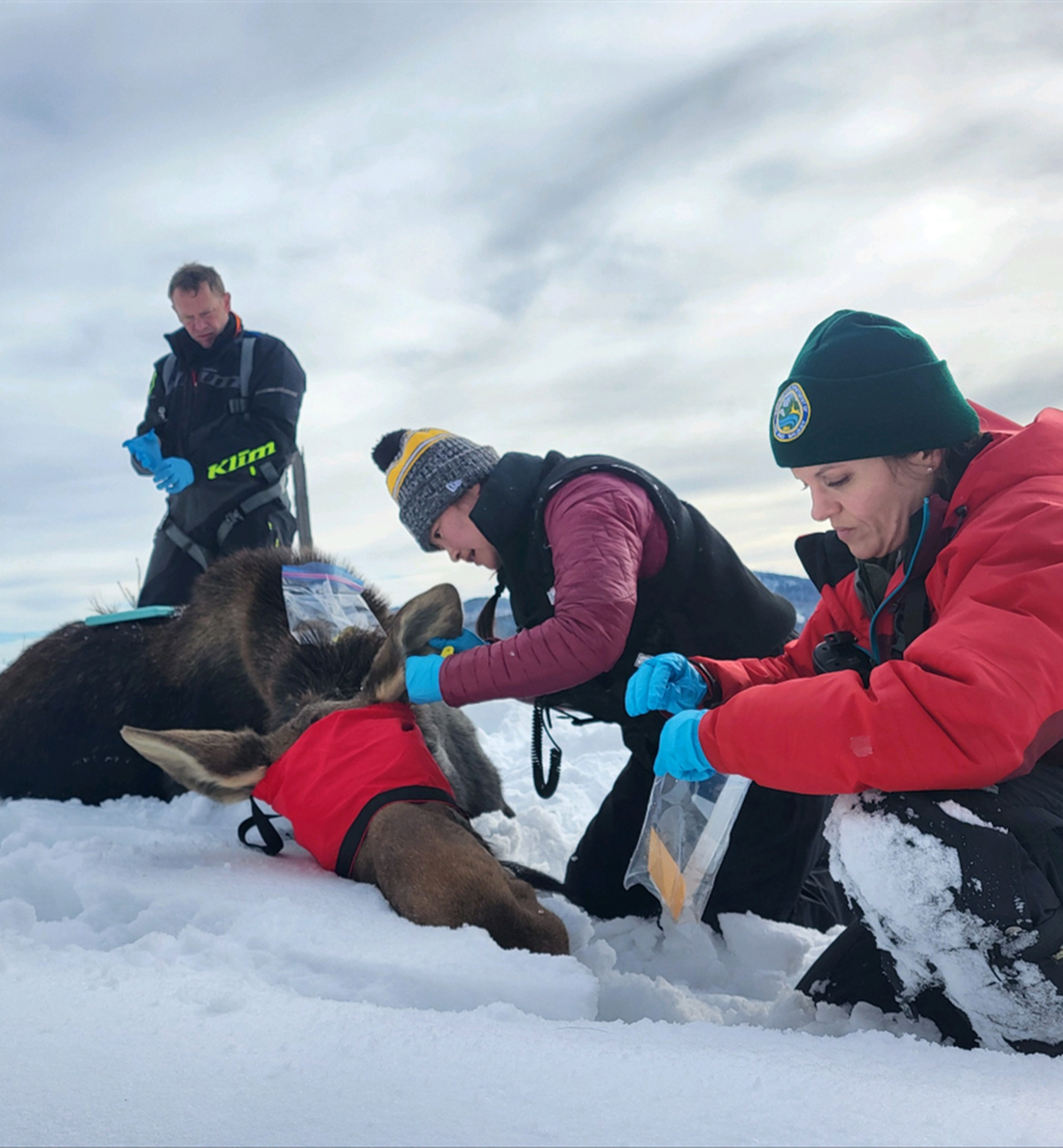Moose research begins in northeast Washington

More than two dozen moose in northeastern Washington are wearing some new jewelry.
In February, biologists from the Washington Department of Fish and Wildlife put GPS collars on 28 female moose, which they’ll use to monitor the animals over the next several years.
It’s the first batch of collars to be put out in WDFW’s latest effort to monitor the moose of northeastern Washington. Over the next three years, they hope to collar 80 moose, WDFW biologist Annemarie Prince said, and they’ll monitor the animals for longer than that.
Biologists are looking for all the typical information involved in these kinds of projects, such as population trends and age and sex ratios, all of which could inform future decisions about hunting regulations. They also combed through the moose’s hair to count ticks.
They are hoping this effort might help them find a way to make their work easier by developing new ways to survey moose populations.
Prince said the lack of consistent snow in the winter has made the typical method of counting moose – flying over them – challenging because moose are hard to spot when there isn’t much snow on the ground.
“It doesn’t really pencil out to fly when the snow is not great,” Prince said. “We need to find a different way to survey moose, or a different way to get information on moose.”
Prince doesn’t know what that looks like, but the answer could end up being some sort of combination of collars and flights.
“We might sort of figure out that may be we just always need to have collars out on moose,” Prince said, adding that the work would also help them figure out just how many collars they’d need to have out to be effective.
Biologists in other states have been looking for new ways to monitor the animals, too. Barb Moore, a biologist with the Idaho Department of Fish and Game, said the agency stopped using aerial surveys about a decade ago because of challenging flying conditions.
Since 2019, they’ve been moving toward using collars and trail cameras to keep an eye on the animals. The cameras are being used for all big game animals in the panhandle region.
It’s gone well for elk and deer, Moore said, but is “still a work in progress” for moose because the animals exist in lower densities and behave differently from elk and deer.
WDFW last had collars on moose in northeastern Washington from 2013 to 2016 for a project that tested a method for estimating population size.
A 2015 estimate from that study put the moose population at about 5,000, mostly in the Selkirk Mountains in Pend Oreille, Stevens, Ferry and Spokane counties. There are some in the Blue Mountains, Prince said, and the species has also been moving west – there are now some in the Methow Valley.
Moose have been on the decline nationwide, but it’s tough to know how the animals are faring here without a reliable way to monitor the population. WDFW has continued conducting aerial surveys, but the success of that work has varied from year to year.
They pair what information they glean from those surveys with hunter harvest data. A handful of game management units in the Spokane area have moose seasons, and harvest data gives biologists a sense of where moose are and how abundant they are. They also hear anecdotal reports from the public.
“I think it’s a mixed bag,” Prince said. “I think moose are probably doing quite well in some places … and maybe not as well in others.”
The collaring project focuses on four game management units in the northeast – 111, 117, 121 and 124. Combined, Prince said, they make up an area that is “representative of where we have moose.”
The collars are designed to stay on the moose’s necks for several years, which will allow Prince and her team to follow the animals. When they captured them, they tested their blood to see if they were pregnant.
Next year, when they go out to capture again, they’ll check on the ones they collared before and will see if their calves survived.
“That will tell us something about recruitment,” Prince said.
The collars also tell biologists when a moose dies by sending a signal after no movement is detected for a set amount of time.
Through that data, they’ll get a sense of survival rates for the year. After that dataset builds for some time, they’ll be able to use it to analyze the state’s moose hunting regulations and determine if any changes are needed.
Results from the study are years down the road, however, as are any significant regulatory changes that may come from the work.